Services
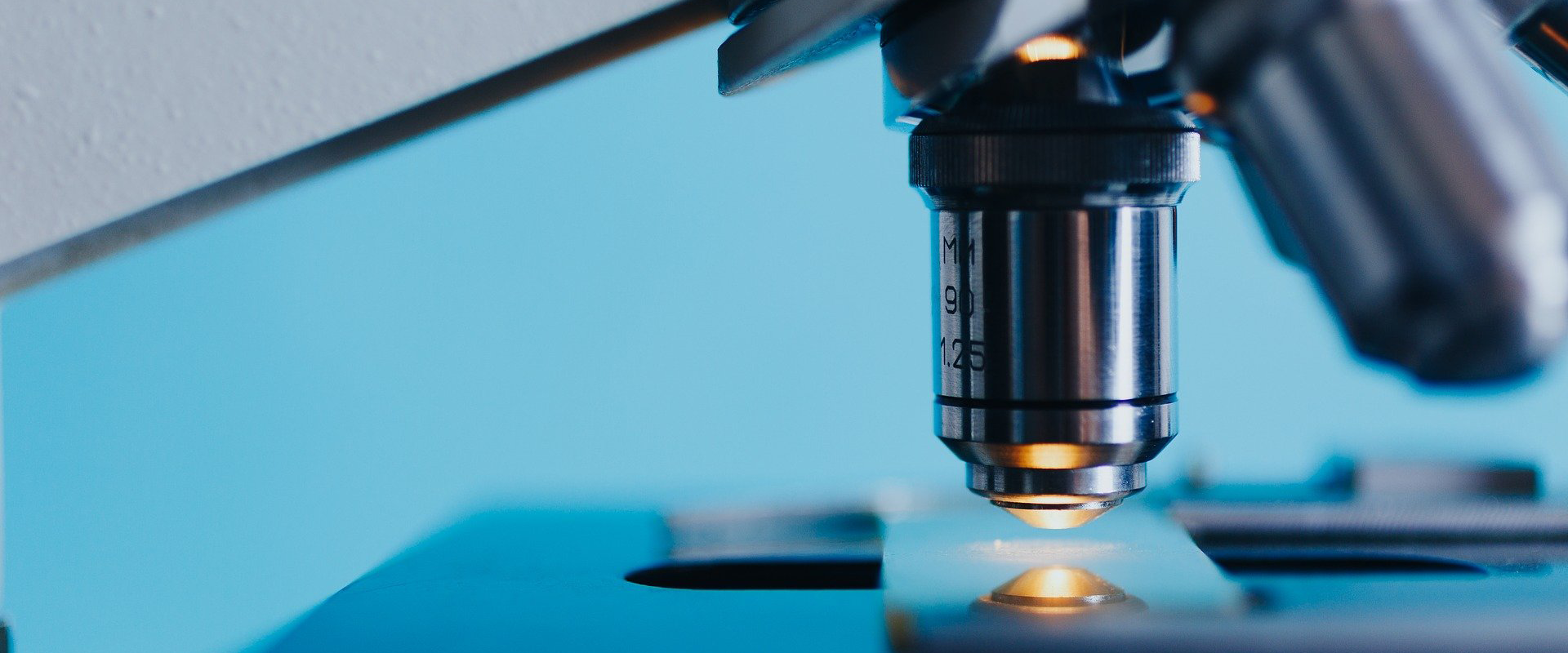
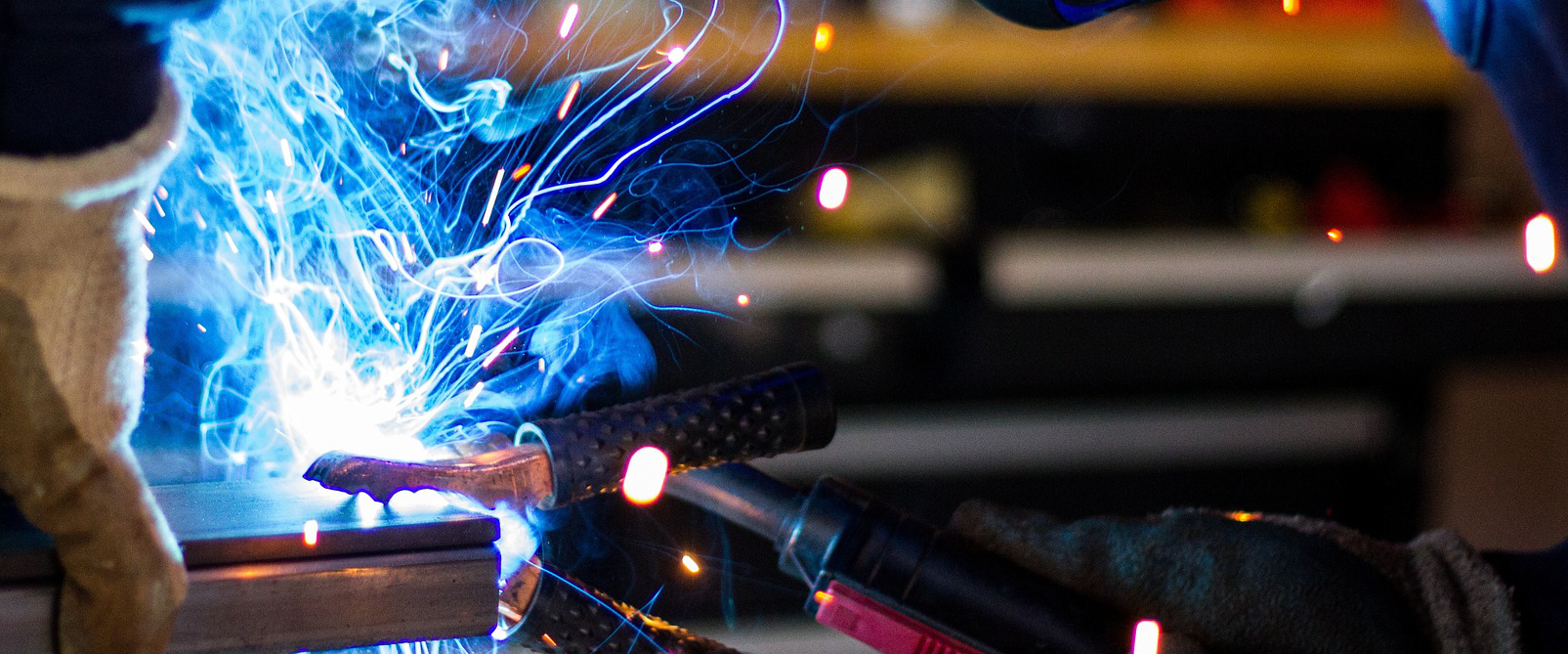
Doseco provides accurate and expert dosemeter services. In addition to personal doses we assess neutron doses, and finger and eye doses. Patient dosimetry is conducted using an easy and reliable TLD method. Our experts in radiation measurement plan and execute assessments according to the customers’ wishes.
INDIVIDUAL MONITORING
It is essential to monitor the radiation exposure level of employees whose duties expose them to radiation so that set dose levels are not exceeded. Depending on the quality and quantity of the duties, monitoring exposure includes either individual monitoring or monitoring of working conditions.
An employee’s radiation dose is measured by using personal dosemeters. In addition to an ordinary personal dosemeter, a finger and eye dosemeter, and a neutron dosemeter are available. Dosemeters are delivered to the client and returned to Doseco by mail.
An ordinary dosemeter measures the radiation exposure dose rate caused by photon and beta radiation. If work exposes an employee to neutrons, a personal dosemeter detecting neutron radiation is used.
Doses are measured using a thermo luminescent dosemeter (TLD), which is a so-called passive radiation dosemeter. Measurement results are available after a use period when the meter is delivered to Doseco for reading.
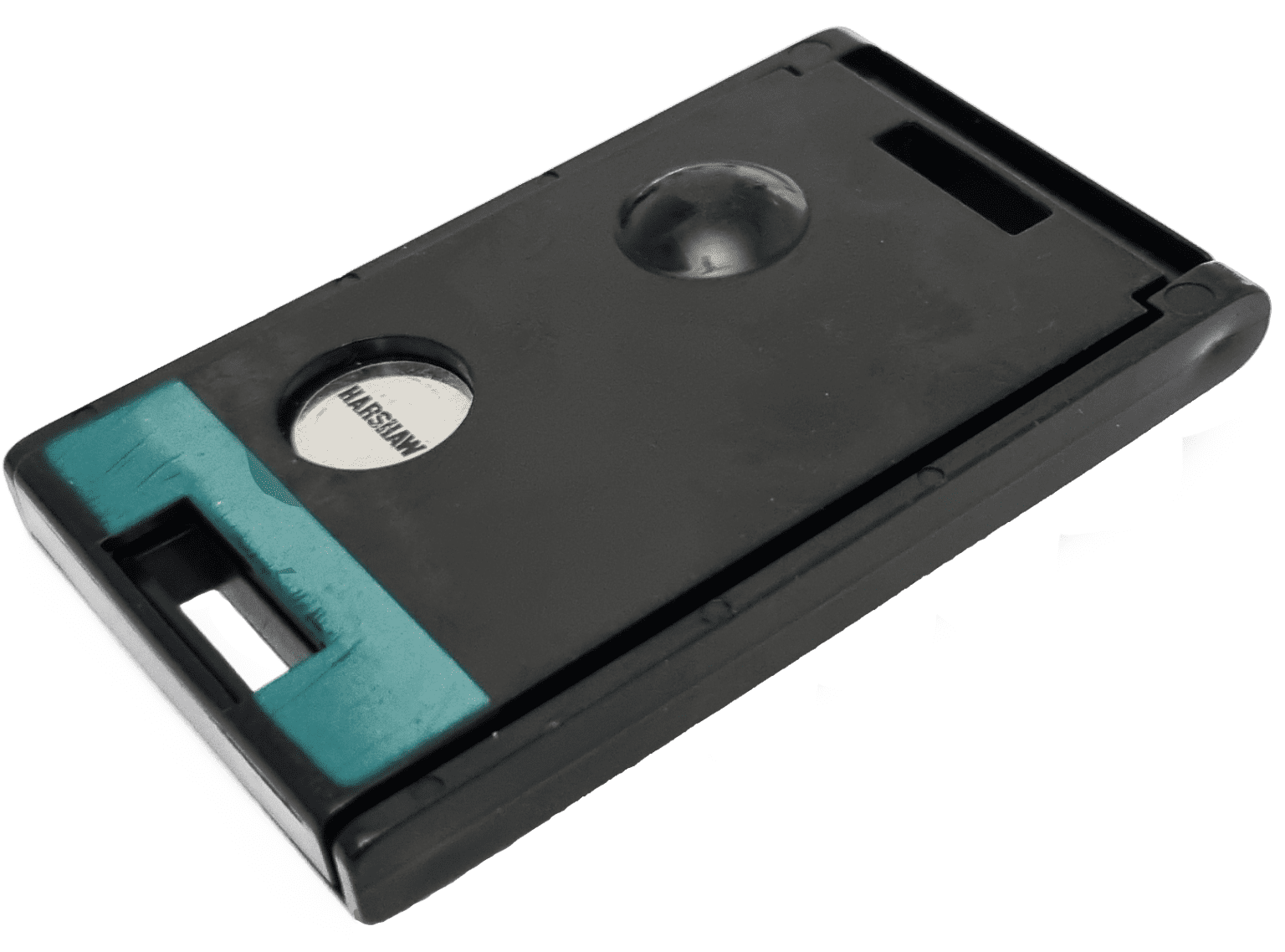
A personal dosemeter is aligned facing the radiation source. Normally, the best location for the dosemeter is on the employee’s chest, attached to work clothes. When lead appron is used, a personal dosemeter is placed on the outside. In work where the exposure level is above 20mSv, another personal dosemeter must be used beneath the lead appron in order to assess the effective dose.
Radioactive contamination of the dosemeter should be avoided. In case of contamination, the dosemeter must be immediately cleaned and this must be reported upon the return of the dosemeter.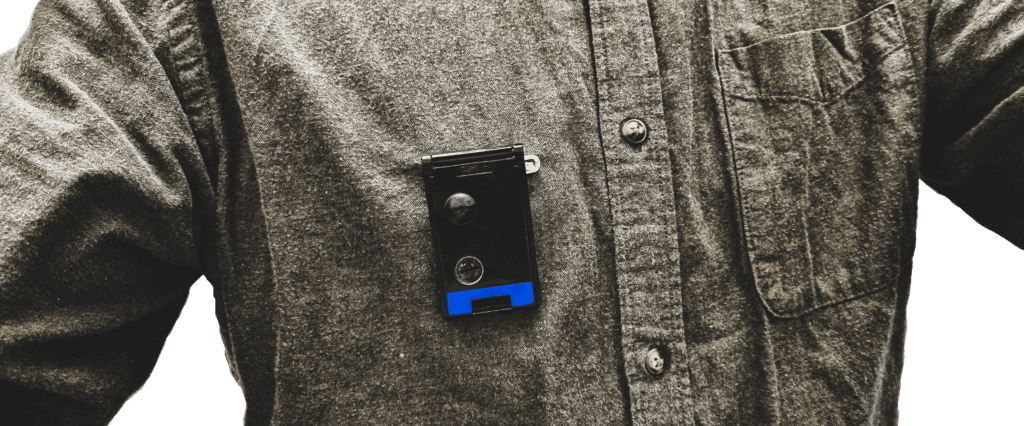
A finger dosemeter
is used to measure the radiation dose to hands. Measuring the dose to
hands may be required, for instance, in interventional radiology, X-ray
diagnostics, handling radioactive isotopes, and in repair and
maintenance work involving radiation sources.
Because the radiation dose varies in different parts of the hand, the
finger dosemeter is placed where the radiation dose is the highest and
the meter is positioned facing the radiation source.
Finger dosemeters may be cleaned or
disinfected using the usual detergent solutions, alcohol, hand
disinfectant, and ethylene oxide. The device is liquid proof.
A finger dosemeter may not be heated over 80 degrees Celsius.
Pressing the radiation detector covered with a transparent lens with
sharp objects is strictly forbidden. The finger dosemeter may not be
dismantled or covered with tape, for instance.
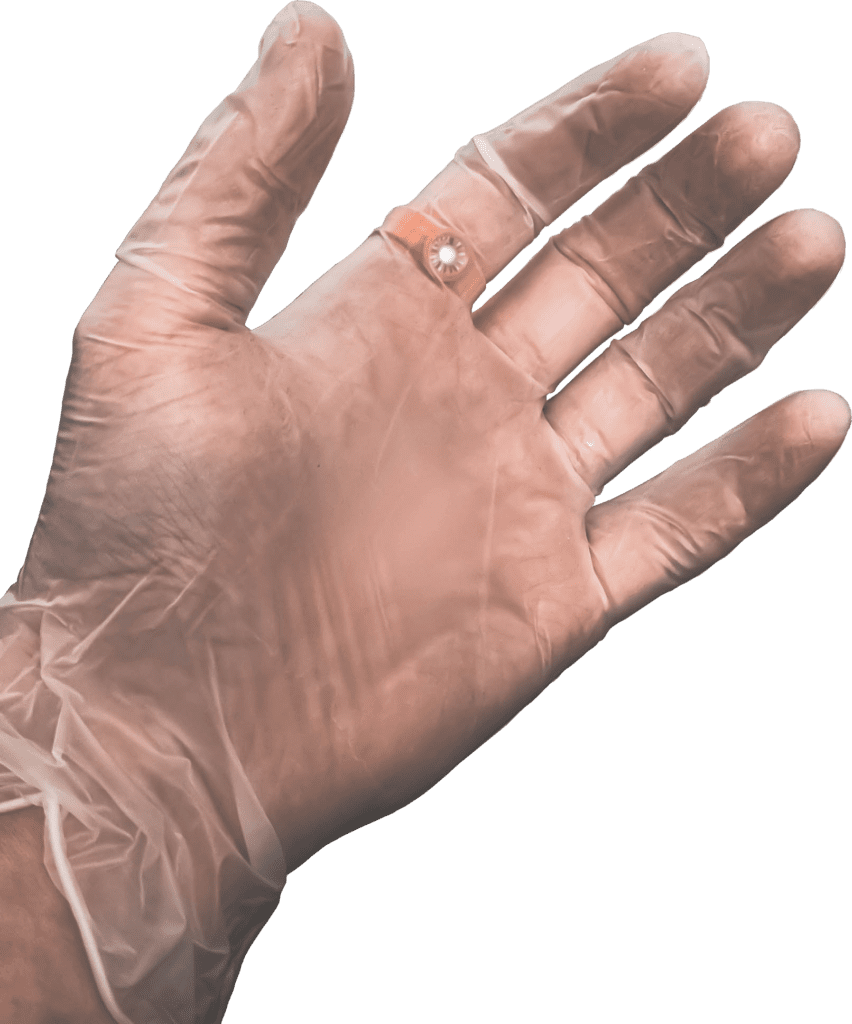
The work related radiation dose received by the employee is determined by subtracting the amount of background radiation from the measured dose. Doseco measures the background radiation level of a workplace with a separate background dosemeter.
The background dosemeter should be placed where it is only exposed to natural background radiation. The background dosemeter needs to be situated in the same place where personal dosemeters are stored when they are not in use. The background dosemeter may not be used for other purposes and must be returned after the use period has ended, along with other dosemeters.
The measurement of background radiation is not subject to separate charge and the measuring service conducts it every 2-3 years.

Measurement methods
Personal dosimeters are used to measure the dose of the external radiation. We have TL-dosimeters and DIS-dosimeters in use. The dose of the hands are measured with a DXT-RAD ringdosimeter. The dose of the eyes can be measured with the DXT-RAD ringdosimeter if needed.
Background radiation is reduced from the measurement, so the reported dose is the result of radiation work. Dosimeters are calibrated to measure deep dose (Hp(10)) and surface dose (Hp(0.07)).
TLD stands for thermoluminescent dosimeter. TLDs are used widely to measure radiation dose. Radiation excites the electrons of the crystal and when the crystal is heated, the electrons emit light. The light is multilpied with a photomultiplier tube and then measured as current. The crystal emits photons depending on the time and temperature, and the total lights emitted form a graph which area is propotional to the radiation dose that the crystal has absorbed. Usually dosimeters measure dose caused by photon and beta radiation.
TLD area of operation
| Dose | 0.1 – 1000 mSv |
| Energy range for photon radiation Hp(10) and Hp(0,07) | 20 keV – 1.3 MeV |
| Energy range for beta radiation Hp(0.07) | 0.8 – 2.3 MeV |
Doseco’s TL-dosimeter consists of a card with LiF (TLD 100) crystals and a case. The card has a place for 4 detectors but has only 3 detectors. The thickness of the detectors is 0.381 ± 0.020 mm.
The cards are analyzed with a TLD-reader. All the detectors are heated to reset the dose before sending the dosimeter to the next user.
Sensitivity of the crystal depends on the energy of the radiation but corrected with proper coefficients in calculations. The excited states of the electrons fall back to ground state slowly and that also must be fixed in calculations.

DIS-dosimeters use an ionization chamber where the charges produced by radiation are gathered with a semiconductor. DIS-dosimeters can be read with a reader whenever because the reading doesn’t nullify the dose. The reader can be stored in the working place which enables daily monitoring. The dosimeter has several chambers that has its own capacity and energy range. When a chamber is full the dosimeter must be hard reseted (emptied).
DIS-dosimeter area of operation
| Dose | 0.1 – 1000 mSv |
| Energy range for photon radiation Hp(10) | 16 keV – 9 MeV |
| Energia range for photon radiation Hp(0,07) | 6 keV – 9 MeV |
| Energia range for beta radiation Hp(0,07) | 240 keV – 2,2 MeV |
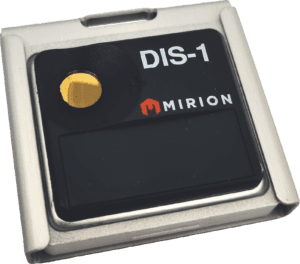
Finger dosimeter is made of three parts: cap (transparent lens), detector and ring. The detector is a thermoluminescent crystal (7LiF: Mg, Cu, P).
The dosimeter is used for x-ray, gamma and beta radiation. Dosimeters are type tested in Germany according to PTB standards.
Finger dosimeter technical information
Summary on the technical information
| Radiation | Photon and beta radiation |
| Unit of measurement |
Surface dose Hp (0,07) |
| Dose | 1.0 mSv – 10 Sv |
Dosimeters range of use
| Photon energy |
20 keV – 1400 keV |
| Beta energy |
50 keV – 2300 keV |
| Angle | 0° ± 60° |
| Ambient temperature |
10° – 40° |
| Ambient humidity |
10% – 90% |
| Sun light |
0 W/m2 – 1000 W/ m2 |
| Water proof |
0 h – 24 h |
| Mechanical shock |
0 m/s2 – 4900 m/s2 |
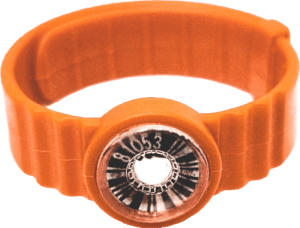
The neutron dosimeter is an albedo TL-dosimeter that uses isotopes 6Li and 7Li. 6Li is considerably more sensitive to neutron radiation than 7Li. Because the sensitivity for gamma radiation is the same, we can differentiate the gamma and the neutron radiation. The response of the isotope 6Li depends on the energy of the neutron and is most sensitive with thermal neutrons.
Nonlinearity of the energy response is enhanced by measuring the scattered albedo-neutrons. Albedo dosimeter has two pairs of 6Li and 7Li crystals. One pair is covered with a boron-filled plastic that absorbs neutrons coming in front of the user.
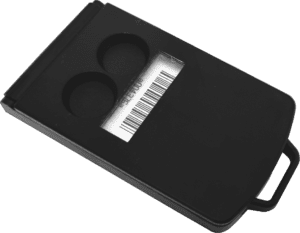
EXPERT SERVICES
We are at your disposal when you require assistance in measuring radiation or in questions regarding radiation safety. We are also familiar with quality issues and offer our expertise in developing and maintaining your quality assurance system.

forms
Forms are printable due to privacy policies. Both of them are in Finnish.
INFORMATION ON RADIATION WORKER
With this printable form you can order dosimeters for new radiation workers or send the information about nameless dosimeters. You can get the same information to us by calling to our customer service
(+358 10 841 7000, 9-11 am).
Referenssit
Olemme käytettävissäsi kun tarvitset apua säteilyn mittaamiseen ja säteilyturvallisuuteen liittyvissä kysymyksissä. Myös laatuasiat ovat meille tuttuja ja tarjoamme osaamistamme laatujärjestelmänne kehittämisessä ja ylläpidossa.
Tässä muutamia referenssejä, joita olemme tehneet teollisuudelle, terveydenhuollolle ja koulutusorganisaatioille.
Teollisuus
-Selvitys ja suositukset romumetallin joukossa olevan säteilylähteen havaitsemisesta metallivalimoissa (Metso Oyj)
– Selvitystyö pienienergisen röntgenlaitteen säteilykentistä
(Oxford Instruments Analytical 2011)
– Mittausjärjestelmän laadunvalvonta
(Olkiluodon voimalaitos 2011)
– Selvitystyö pienienergisen röntgenlaitteen säteilykentistä
(Oxford Instruments Analytical 2010)
– Selvitystyö pienienergisen röntgenlaitteen säteilykentistä
(Oxford Instruments Analytical 2009)
– Selvitystyö elektronisesta dosimetrista
(Olkiluodon voimalaitos 2009)
– Selvitys neutronidosimetriasta
(Loviisan voimalaitos 2006)
– Suurten fotoniannosten määritys TLD -menetelmällä
(Olkiluodon voimalaitos 2005)
– Henkilöannosmittaukset TLD-menetelmällä Olkiluodon voimalaitoksella 2003 alkaen
Terveydenhuolto
– Selvitystyö natiivikuvauslaitteiden säteilyannostasoista (OYS 2008)
– Keskosten säteilyaltistuksen mittaaminen röntgentutkimuksissa
(KYS 2008)
– Läpivalaisulaitteiston spektrimittaus (K-S keskussairaala 2008)
– Kilpirauhassuojan vaikutus annostasoihin lasten röntgentutkimuksissa
(HUS-Röntgen, Kätilöopiston sairaala 2005)
Koulutus
Luennot vastaavan johtajan säteilysuojelukoulutuksessa (AEL)
- Säteilyn luonne ja ominaisuudet
- Säteilyn yksiköt ja mittaaminen
- Säteilyaltistuksen mittaaminen
– Luennot säteilytyöluokkaan A kuuluvien työntekijöiden terveystarkkailusta vastaavien lääkäreiden ”Säteily ja terveys” -kurssilla (Työterveyslaitos)
